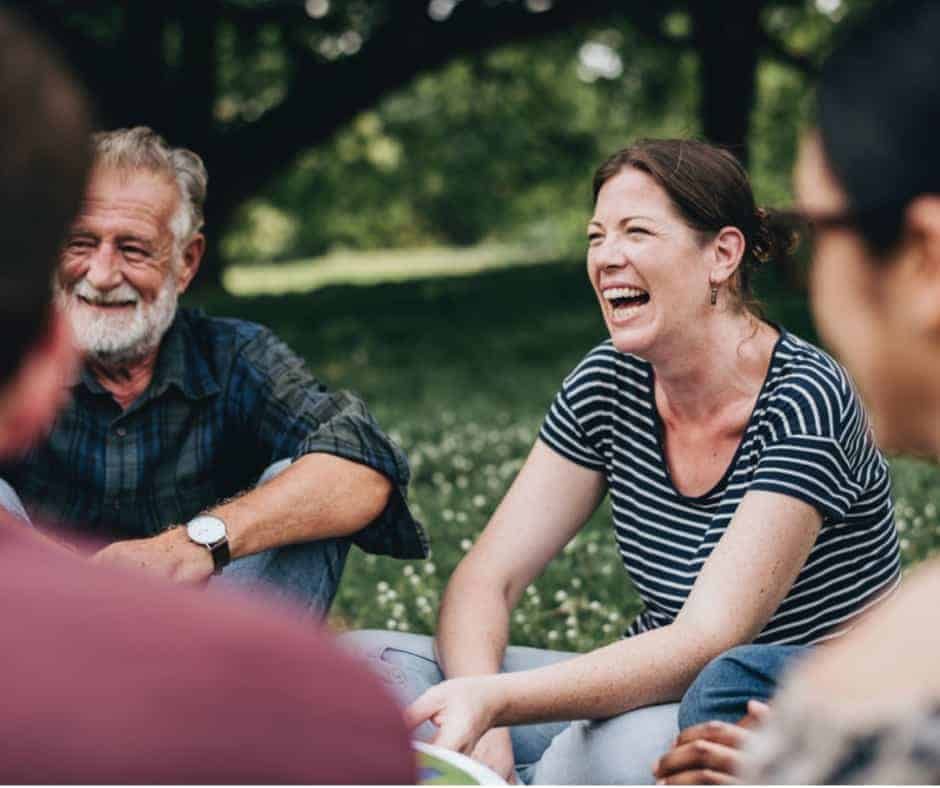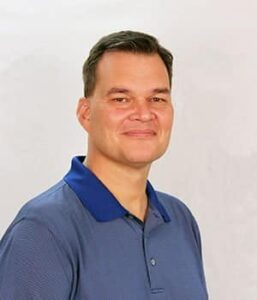By Dr. Brian Moore
Psychologist and Interventionist
Founder and Director of The Intervention Group
The intervention has become a familiar ritual in our culture. It’s often depicted in television and movies, and many of you reading this may have even participated in one.
But despite our cultural familiarity with the idea of the intervention, people are often unsure about how to go about it, which makes sense. Discussing a loved one’s substance abuse with them is obviously a difficult and sensitive conversation, and approaching this topic should be handled with thoughtfulness and great care. Engaging with resources like this is a great beginning to finding the most healthy and effective way to communicate with your loved one about their substance abuse.
I’ve been a psychologist for over 30 years, and for 25 of those years, I’ve worked exclusively as an interventionist, providing services to families and corporate clients. At my practice, The Intervention Group, we provide a complete continuum of intervention services. This means that we help people organize, prepare, and implement interventions, which includes making arrangements for travel and checking that person into treatment if the person makes the choice to get help.
In addition to drug and alcohol dependence, we also work with families confronting behavioral addictions, such as sex addiction and gambling, as well as mental health concerns like depression.
In this article, I am going to be focusing on drug and alcohol interventions. These are some of the key things that I regularly work on with people to help them lovingly and effectively communicate with their loved one about their substance abuse.
There Is Something You Can Do
When families or friends of people in active addiction see their loved one’s drinking or drug use getting worse, too often, they are told by well-meaning but misinformed people: “There is nothing you can do. You have to wait for the person with the problem to want to get help.”
As a licensed psychologist, interventionist, and family member of multiple people in recovery, I can tell you: this simply is not true.
I firmly agree with what they say in Al-Anon about the three Cs: (1) You didn’t CAUSE the addiction or alcoholism; (2) You can’t CONTROL it; and (3)You can’t CURE it.
But that does not mean there is nothing we can do. We cannot control or cure their disease, but we can provide opportunities to allow that person to get the help that they need.
In my work as an interventionist, I have seen, over and over, that there are concrete things that loved ones can do for people in active addiction or alcoholism.
Let me be clear, we cannot make their decision for them to get into recovery, but we can at least provide them with the opportunity.
The reason we can help is that denial is the biggest obstacle to recovery.
When people are in denial, they are not able to appreciate how ill they are or how much help they might need. They are not intentionally being difficult, but they are simply incapable of seeing their sickness the way others can. The lens they are using to process their reality has been distorted by drug and alcohol use. Their disease has rendered them incapable of seeing cause and effect relating to their drinking and use the way that the healthy people around them can.
People do not typically snap out of denial of their own accord; an outside force usually helps in this process.
Everybody in Recovery Has Had an Intervention
Whether they call it an “intervention” or not, everybody in recovery has had one. Something or someone has gotten in the way of their dependence on the substance and punctured their denial about their illness and its effects.
There are structured, formal interventions, like the ones that I help people with. In these interventions, family and friends plan a meeting in which they express their love and concern for the person struggling with the addiction. They set supportive boundaries to help the loved one address the illness they are in denial about. They then continue to hold those boundaries after the initial conversation.
Sometimes, professionals like myself are called in to help facilitate these conversations; sometimes, people do it without the help of outside professionals. But in either case, an attempt is made by people who care about the person to draw attention to the illness that he or she is in denial about.
Then there is the other category, unplanned interventions, in which people are simply intervened on by the cold, cruel world. They are forced to confront the consequences of their illness, often without the benefit of loving, supportive people surrounding them to offer a tangible way forward into recovery.
The world intervenes in any number of ways, such as taking the person’s job away from them or having their spouse leave them. Maybe the person abusing substances loses custody of their children, has a car accident, or gets arrested. As a direct result of this unplanned intervention that comes through natural consequences, the person is then offered the opportunity to address the illness they had previously been in denial about.
Both of these types of interventions can be valuable and lead to long-term recovery, but of course, the first one can be performed in a safe and loving setting, whereas we have no control over how the unplanned intervention will play itself out.
In a structured, planned intervention, people close to the person can give him or her the opportunity to begin addressing the denial before serious health, legal, or professional consequences force them to.
As an interventionist, what I’m helping people create is a loving crisis in the person’s life instead of waiting for the world to create a very cold and uncaring crisis. Our goal is to interrupt the person’s dysfunctional behavior pattern and offer him or her a pathway to real help and recovery, rather than waiting for extreme consequences to force them into a desperate situation.
You Don’t Have to Wait for Things to Get Worse
Many of us have this illusion that doing a structured intervention should be a last-ditch effort. This is a mistake.
We do not need to wait until things are desperate or the person is at death’s door before we provide an opportunity for our loved one to start getting better.
As far as I can tell, treating addiction is the only area of healthcare where the general attitude is: “It’s not bad enough yet to intervene.”
If our loved one had cancer, we wouldn’t want to wait until they were emaciated without the strength to walk before we did anything. And yet, with substance use disorder, that’s how we often approach it. We wait until the situation is critical and the person is at risk of dying.
Anywhere else in healthcare, we would be outraged by this attitude. In every other area of healthcare, we want to have a treatment that’s aggressive and helps to get people to a better place before they’re badly affected by their disease.
If our loved ones had cancer, we wouldn’t want to wait until they were emaciated without the strength to walk before we did anything. And yet, with substance use disorder, that’s how we often approach it. We wait until the situation is critical and the person is at risk of dying.
It’s a myth that people have to hit “rock bottom” to get better. Because in many cases, rock bottom is death. The work I do with clients and their families is attempting to raise the bottom as high as possible so that they don’t have to continue losing things and hurting themselves and others.
Hitting the bottom is just the point at which we turn around and go in a different direction. And that bottom does not necessarily have to include dramatic, tragic, and awful circumstances.
An Intervention Is Not a Single Conversation
An effective intervention is not a one-time event that takes place, followed by everybody returning to things as they were.
Yes, interventions do include an important conversation where boundaries are lovingly and clearly communicated to the person with the addiction. But the intervention needs to continue after that conversation is over. Family members need to hold to the boundaries that were communicated in that initial conversation.
I tell families that everything that they do in their relationship with the person after that initial conversation is going to fit into one of two buckets. They are either facilitating their loved one’s treatment and recovery, or they are facilitating the disease. And I don’t believe there is any in-between.
When we uphold healthy and clearly communicated boundaries, we help ensure that we are intervening in a positive way by contributing to the person’s recovery, not strengthening their disease.
For example, if an adult child is the one with the addiction, I’ll tell the parents that I want that person to always know that the door is open to the child. However, boundaries will help put a shape to that door and help them understand how they get to enter. Healthy families aren’t going to tolerate active addiction in their midst because that simply is not healthy and productive for that person.
The intervention should be about constructing the choice so the person has the opportunity to get into recovery. That means providing legitimate, tangible steps for the person to get the treatment and help they need. If they refuse that choice, love requires us to hold the boundary we communicated to them in that conversation.
You Don’t Need to Argue
People I work with often assume that I am going to tell them that they need to get really angry, be a man, stomp their feet, and demand that the person go-to treatment. And that’s not what an effective intervention looks like.
I believe that the most powerful force that we have to bring to bear is the fact that all of the people in the room love the person. We all want the best for him or her. That is a much more powerful approach than one that is aggressive, combative, or coercive. Having people who care is so much more powerful than anybody being angry and threatening could ever be.
If you get in an argument with a person in active addiction, you’re going to lose every time. The person with the addiction is perceiving the situation they are in from a place of denial. Essentially you are arguing with somebody who is dealing with a completely different set of “facts,” which actually are not “facts” at all, but distortions of reality shaped by their disease.
The person with the addiction is seeing things through the lens of their illness and the deeply felt belief that they need to continue using, even though they don’t realize it. No emotional argument that you string together will be able to win out against that.
You Can’t Force Them to Make the Decision You Want Them to Make
I tell people going into an intervention that they need to hold a boundary for themselves that respects their loved one’s autonomy. In Al-Anon, they call this “giving the person the dignity of their own choice.”
For an intervention to be effective, the loved one’s need to make it clear that they are not here to control that person. We construct a choice, and layout a tangible option of how they can get treatment. But we can’t force them to make the decision we want them to make.
Regardless of their choice on that day, if we do our part well, the landscape of that addiction will have changed that day.
There are two pieces to the interaction: our piece and their piece. My goal is to help families have control over their piece of the interaction.
Giving the person the freedom to make his or her own decision is often the most difficult part of intervening with those we love. We often need help with this. An interventionist, therapist, and an Al-Anon group (to name just a few resources) can be helpful in assisting us in letting go of trying to control the outcome of intervening with our loved one.
Of course, we want the person to say “yes” and accept help. However, even if they say “no,” if we have communicated our boundaries clearly and lovingly, it is still a good day. We are interested in them going to treatment the day after, the week after, or as soon as possible.
Regardless of their choice on that day, if we do our part well, the landscape of that addiction will have changed that day, and we will have made progress. We can continue to build on that progress by maintaining strong, healthy boundaries going forward.
I wish I could say they always get better, but the truth is they don’t. This disease is an insidious and terrible disease, and we know that we don’t have control of that either. What we do have control over is putting ourselves in the best position to put them in the best position to get better.





